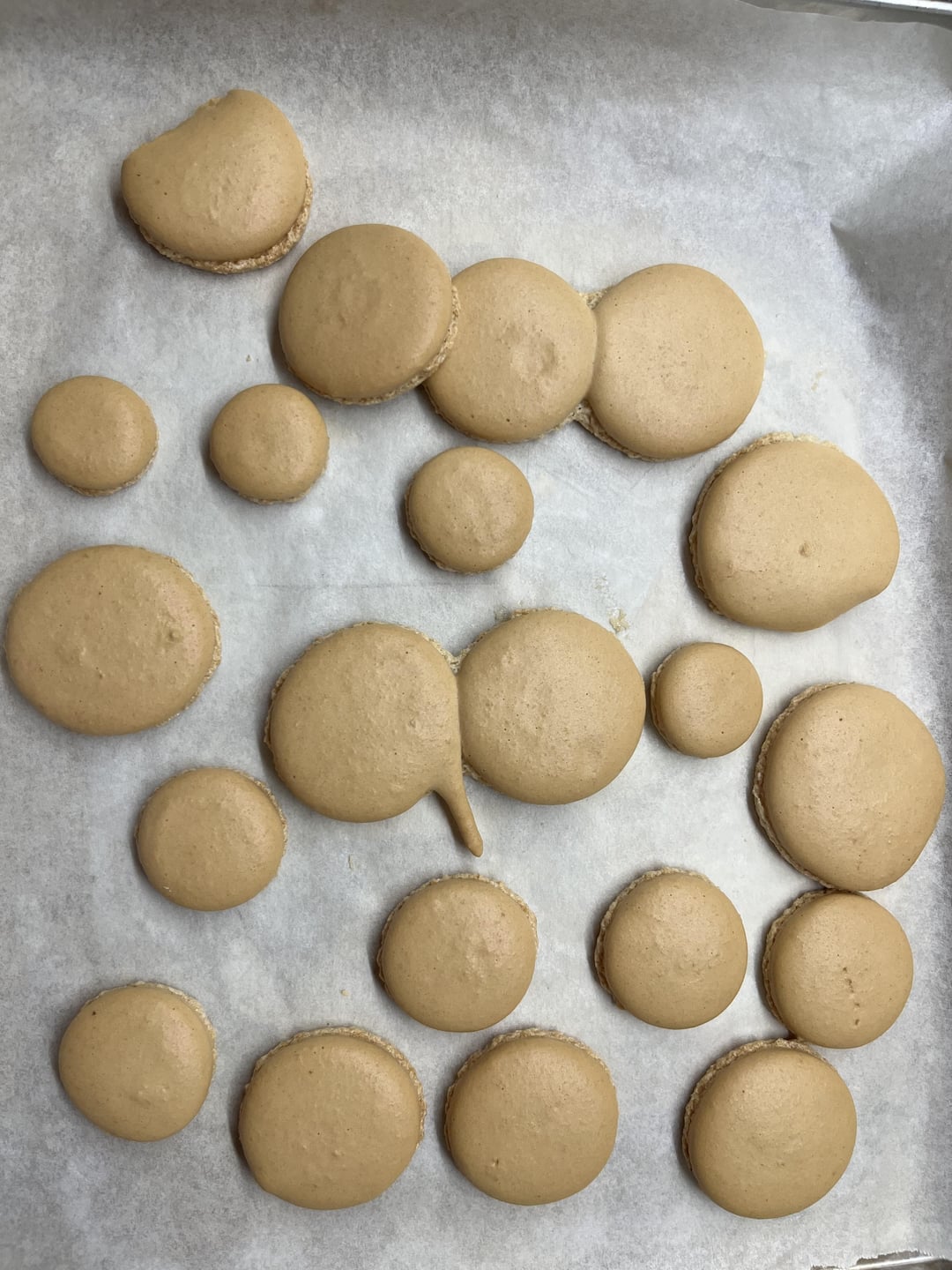
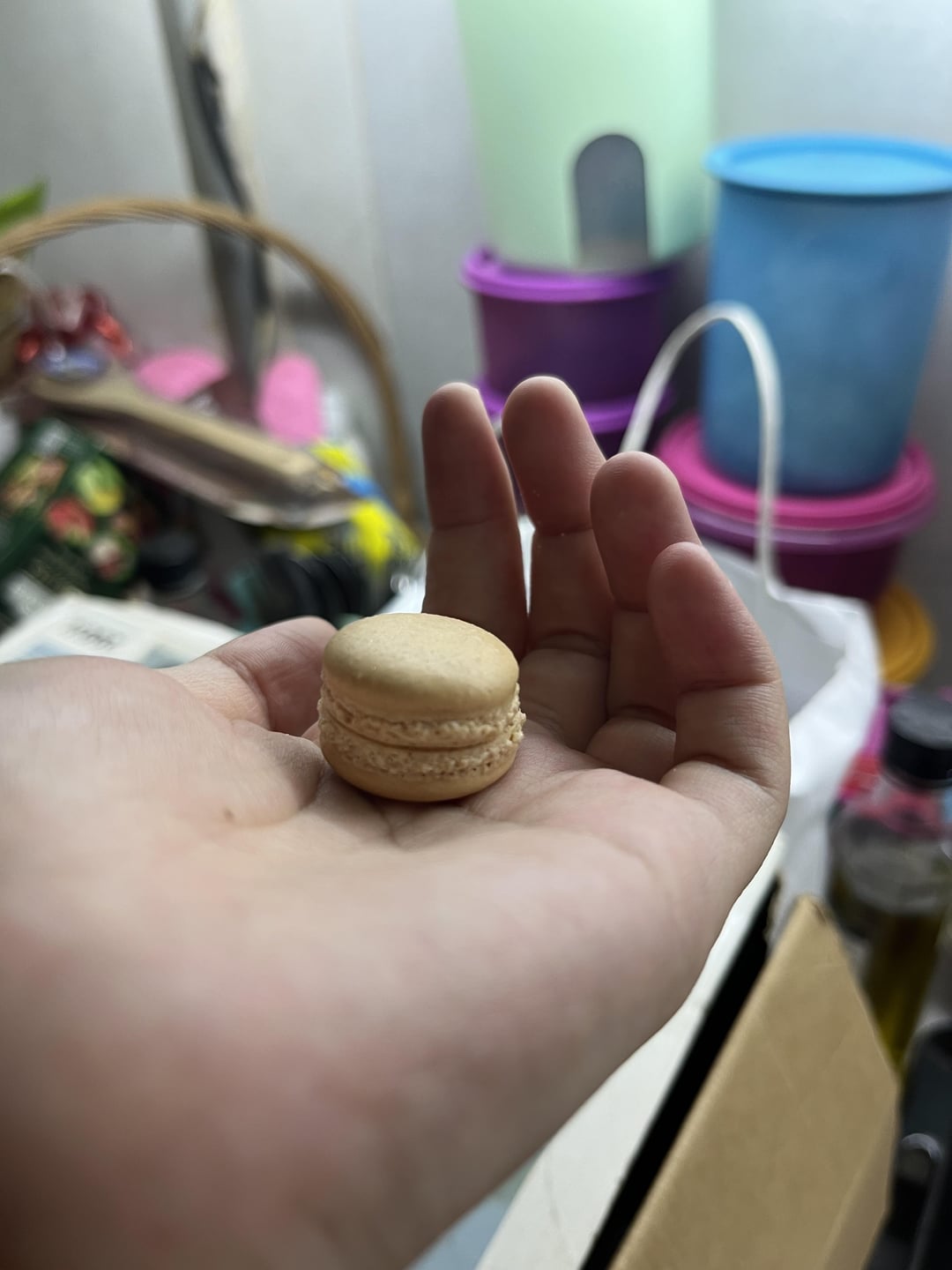
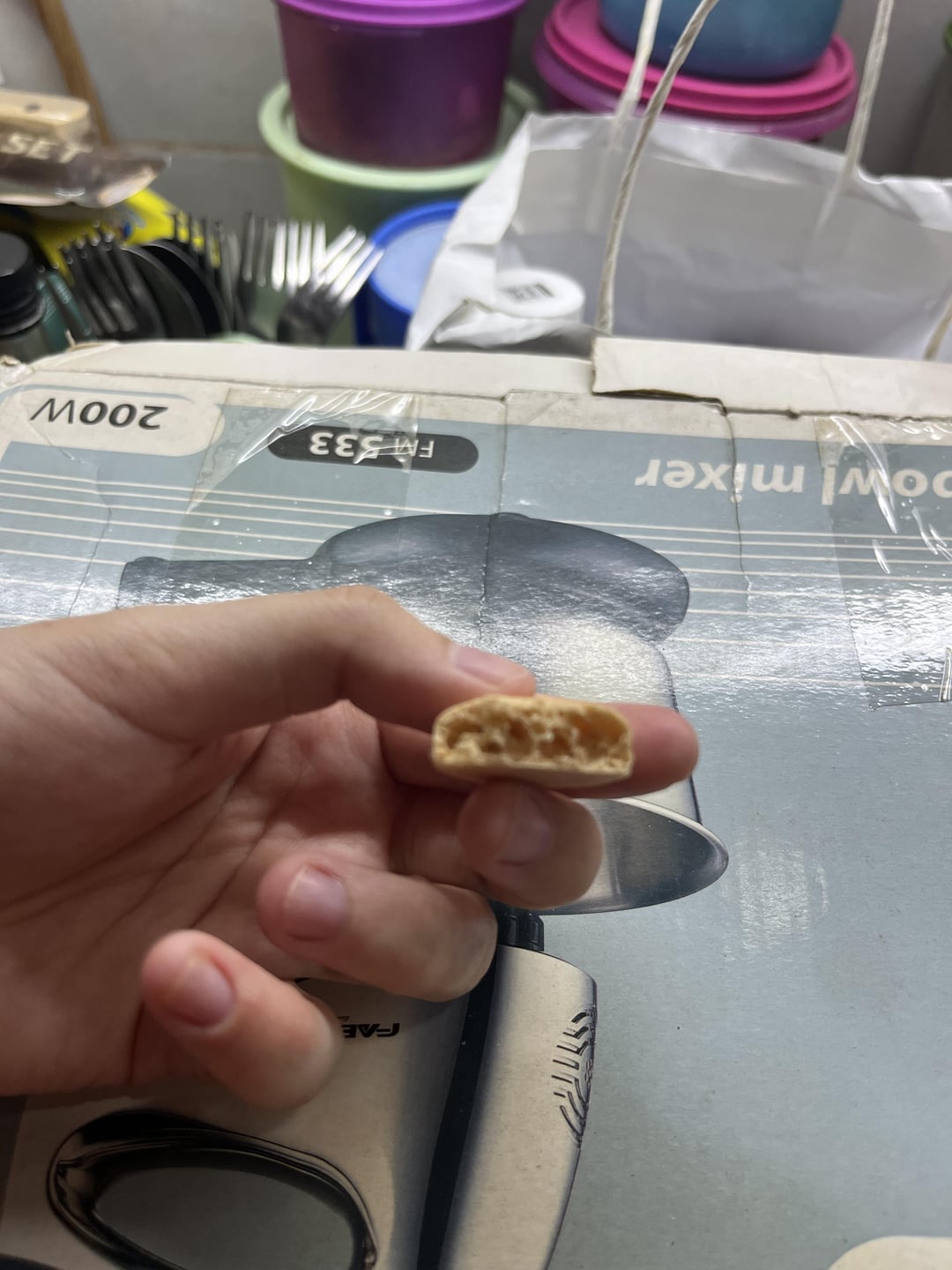
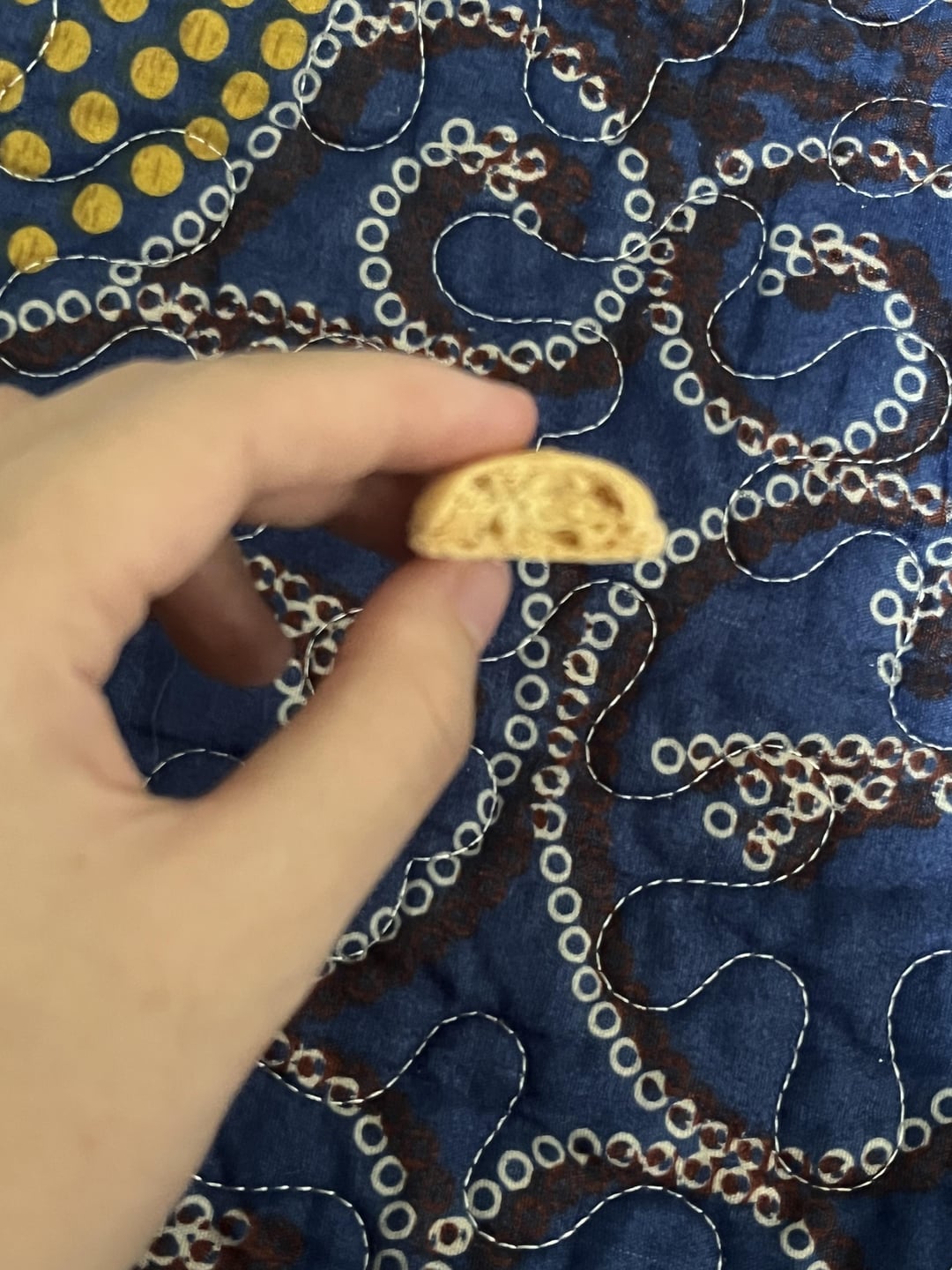
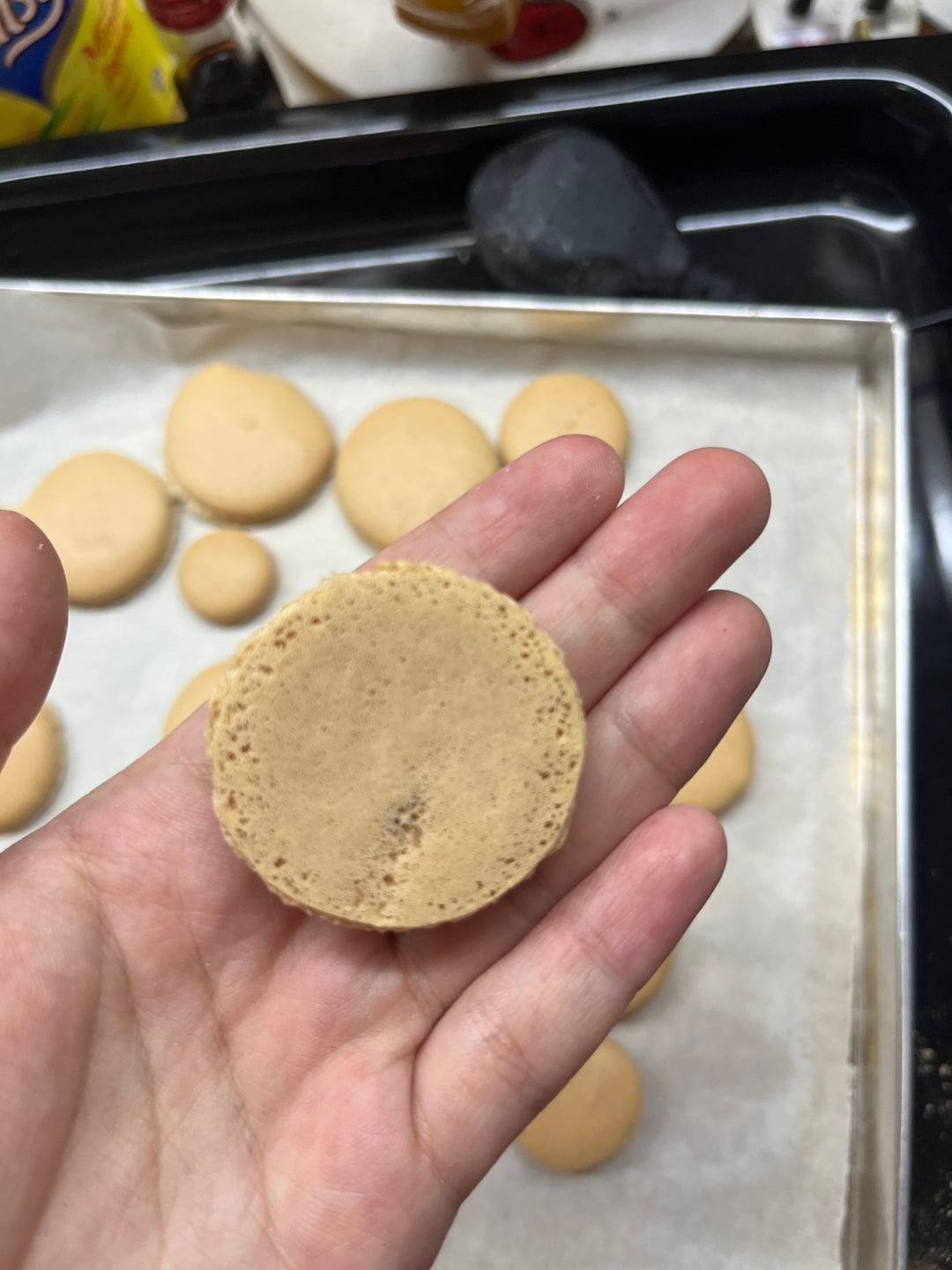
This is my 3rd attempt after 2 failed attempts 5 years ago.
This is the recipe:
Ingredients: 140 gm Icing Sugar 80 gm Almond Powder 80 gm Egg White 65 gm Castor Sugar
https://m.youtube.com/watch?
v=C1XjdDUslTo&pp=ygUOcmVzZXBp|G1hY2Fyb24%
3D
What I did that was different from the video
:
1. Used ground almonds instead of almond flour (it is difficult to find true almond flour in malaysian local bakeries)
Blitzed the ground almonds together with icing sugar in food processor (around 5 seconds per cycle, 10 times)
Used swiss meringue method (dissolve sugar in egg whites and double boil over simmering water until temperature reached 52 C/125.6 F). In the video she uses french meringue technique.
Mixed and macaronaged the batter using a wooden spatula instead of a silicone one.
Free piped the macarons without a template on parchment paper on an aluminium tray
Let the macarons dry/form a skin for 45 minutes (the video did 30 minutes). At around the 30 minutes mark, my macarons already formed a skin but the skin is not 'tough' enough idk how to say it.
I used a built in oven on the conventional setting to bake them for 15 minutes at 150 C/302 F (I used a cheap oven thermometer)
Questions:
1. Is the sugar used in this recipe too much? The macarons tasted very sweet and when I bang 2 shells together it does not crack at all (hard/tough shells)
- Could I have overbaked the macarons? I did not use any food coloring (the batter was white initially) and they turned beige at around 10 minutes in the oven.
I wish to bake lighter colored macarons in the future (pastel pink) and I want to prevent browning.
*I baked at 150 C/302F for 15 mins
- Some of the macarons have a spongy looking interior – 3rd photo (is this considered hollow? Or normal? – the shell did not crack when I push them down)
The bigger ones have full shells with a slightly chewy center.
Can the spongy interior be caused by undermacaronaging?
- Should I use different ratios of sugar to egg whites when using swiss meringue method? I asked chatgpt and they said that the ratios should be the same.
by kucingbusuk


2 Comments
Besides the irregular shape, they look great, actually.
Traditionally, macarons were all cooked until crunchy. It’s perfectly normal for them to be that way. The more normal conventional standard nowadays means they should still be kinda crunchy on the outside and chewy on the inside. HOWEVER, all macarons are expected to be filled and matured to reach the ideal texture. Which is slightly delicately crisp or firm on the outside, but slightly chewy on the inside. You can’t really judge hallows until after they’re filled because as the cookie absorbes moisture from the filling, the inside will expand some.
Ratios for recipes will vary, but more sugar tends to be more stable. Rather than changing the recipe initially, I recommend filling it with something bittersweet, sour, or more neutral first and trying the in their final form. If you still find them too sweet, then look for a tested recipe that’s more along your lines. But kind of across the board, I’ve always thought that they’re closer to candy than cookies a lot (but I love that, personally, lol).
I think you are correct, this looks like too much sugar to me.
The ratios in this recipe look off – both the sugar/almond flour and the wet (meringue) to dry.
Let’s look at the sugar/almond flour first and then balance the overall wet to dry.
To keep your batch size to roughly the same amount I would reduce the icing sugar to 100g and increase almond flour to 100g. This will give you 200g of dries.
For the wet side (meringue) to keep your wet/dry ratio within range I would use 70g each of egg white and sugar.
Recipe conversion:
Dry – 140g/80g to 100g/100g
Wet – 80/65g to 70/70g
This ratio works for me on the central coast of California where it is not as humid as Indonesia. There are likely other bakers who have much deeper knowledge on the impact of humidity.
Hopefully, this helps – happy baking!